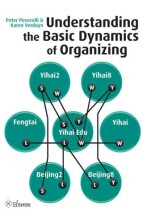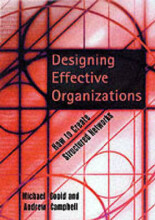Recap: slides
6 important questions on Recap: slides
How can a context for change be creates? (3)
2. Organizational structures that protest and/or facilitate learning (ambidexterity)
3. Creating an open communication climate
What is meant with the first 'context for change': creating flexible structures?
They are a different cut on the organization's structure: one that emphasizes the learning that people have done together rather than the unit they report to/the project they are working on/the people they know.
F.e. Xerox employees exchanged tips and tricks during lunch etc. and Xerox created the 'Eureka project' to share this interactions across the global network.
What is meant with the second 'context for change': facilitate organizational learning?
1. Intuiting = the recognition of the pattern and/or possibilities inherent in a persona; stream of experience.
2. Interpreting = The explaining of an insight, or idea to one's self or others (preverbal and verbal: development of language)
3. Integrating = developing shared understanding amongst individuals and the taking of coordinated action through mutual adjustment (dialogue and joint action are crucial). This process is ad hoc and informal.
4. Institutionalizing = the process of ensuring that routinized actions occur (tasks are defined, actions specified, organizational mechanism put in place: learning is embedded)
> Image 10
- Higher grades + faster learning
- Never study anything twice
- 100% sure, 100% understanding
Developing ambidexterity also belongs to the second way of creating a context for change (facilitate organizational learning). Explain this.
-Skilled with both hands
-New knowledge and existing knowledge.
Explain the "third context of change": create an open communication climate:
-Upward: what needs to be done and how it can be done. information from employees cast upward. F.e. info about practices and policies.
> Allowing employees to communicate upwards is important because their information may be used to improve the organization's performance and profitability.
Routine are similar but not exactly the same. Explain what they are:
Repetitive - recognizable - multiple actors
The question on the page originate from the summary of the following study material:
- A unique study and practice tool
- Never study anything twice again
- Get the grades you hope for
- 100% sure, 100% understanding






























